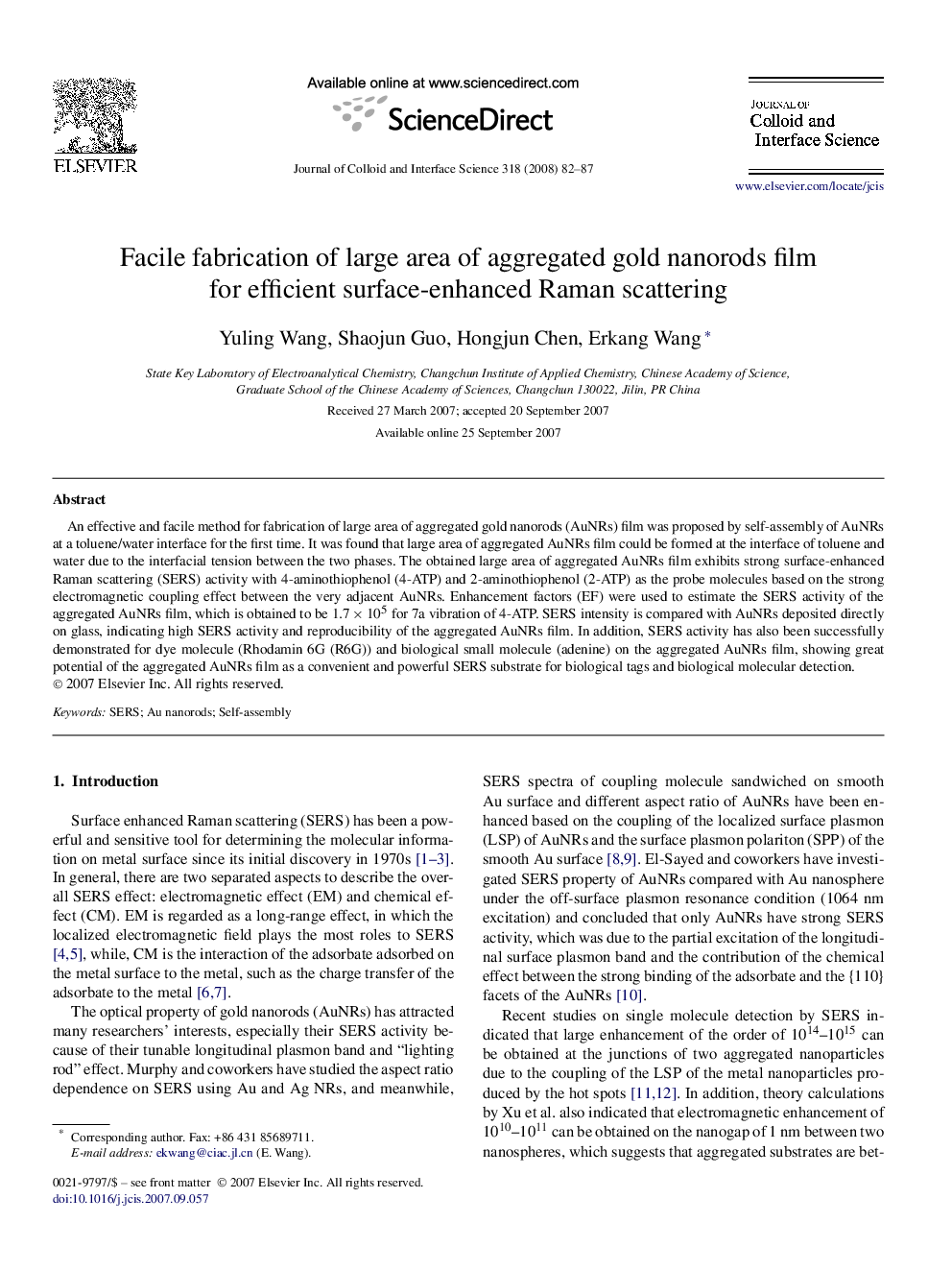| Article ID | Journal | Published Year | Pages | File Type |
|---|---|---|---|---|
| 611726 | Journal of Colloid and Interface Science | 2008 | 6 Pages |
An effective and facile method for fabrication of large area of aggregated gold nanorods (AuNRs) film was proposed by self-assembly of AuNRs at a toluene/water interface for the first time. It was found that large area of aggregated AuNRs film could be formed at the interface of toluene and water due to the interfacial tension between the two phases. The obtained large area of aggregated AuNRs film exhibits strong surface-enhanced Raman scattering (SERS) activity with 4-aminothiophenol (4-ATP) and 2-aminothiophenol (2-ATP) as the probe molecules based on the strong electromagnetic coupling effect between the very adjacent AuNRs. Enhancement factors (EF) were used to estimate the SERS activity of the aggregated AuNRs film, which is obtained to be 1.7×1051.7×105 for 7a vibration of 4-ATP. SERS intensity is compared with AuNRs deposited directly on glass, indicating high SERS activity and reproducibility of the aggregated AuNRs film. In addition, SERS activity has also been successfully demonstrated for dye molecule (Rhodamin 6G (R6G)) and biological small molecule (adenine) on the aggregated AuNRs film, showing great potential of the aggregated AuNRs film as a convenient and powerful SERS substrate for biological tags and biological molecular detection.
Graphical abstractEffective and facile fabrication of large area of aggregated gold nanorods film was proposed, which exhibits strong SERS activity.Figure optionsDownload full-size imageDownload as PowerPoint slide
